My general fuel additives cover both E85, gasoline, diesel and also the experimental additive dEC+ can be found. They are based on
various naphtha products, diesel, acetone, alcohols and IPA. They are carefully tested chemical constellations that work. Fuel additives for E85 are T66 and the
new SH +. ISO can be seen as a universal additive but is well suited for diesel. For gasoline we have A40 and AXg. Even D66 alone works well for
gasoline. AT2 and AG+ are two special additives which still are under development; you can study them here under
NAMAG. If you drive on E85, then click on ”Glycols Additives” - they are effect enhancement
(opening time reducing). All additives are long-acting.
Apart from a certain opening-time reduction (increment of power) seems the additives; cleaning, lubricating, water absorbent and for diesel; both cleaning and bactericidal.
The power increase does not depend on that the energy in the fuel has increased but that the burning has become more efficient and faster.
The procedure for preparation is to first determine the amount of an additive that is desired, then multiplying the amount with - the component through the ”sum”. For instance, suppose we want to have 900 ml of T66 - then one can prepare 600 ml of lighter fluid first (900 x 2/3). The following components are calculated the same way. To determine the amount of diesel for the same example; take 900 x 1/3 which is 300 ml of diesel.
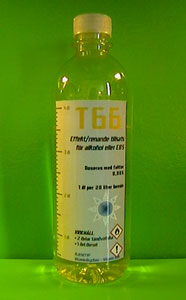 |
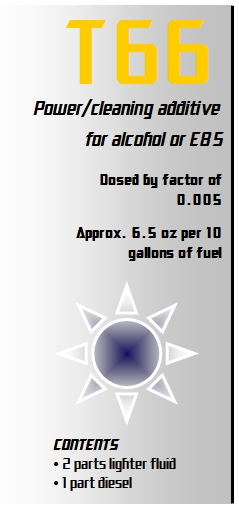 |
||
Only for E85. Power enhancing and cleans/lubricates the fuel system. |
|||
Dose factor: 0.005 |
0.5 % |
||
2 parts lighter fluid (hydrogen treated naphtha) 1 part diesel - avoid ACP! (Preem) sum = 3 parts |
|||
Commentary |
|||
Has excellent and long-acting properties. Should be kept cool! Some lighter fluids or diesel grades not works. T66 can not replace D66 in combination
with glycol additives. |
|||
Consumption gain: 2-5 % |
|||
Opening time reduction: 30-40 % |
|||
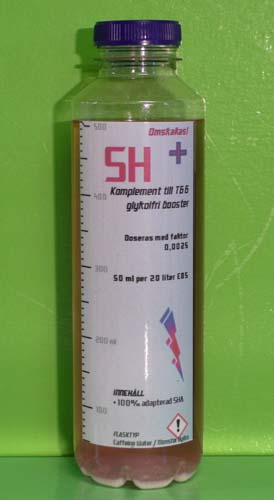 |
Shake before dosing! |
 |
|
Glycol free booster only for E85. |
|||
Dose factor: 0.0025 |
0.25 % |
||
100% adapted SHA - must be ordered |
|||
Commentary |
|||
Preferably combined with T66. A very economical additive that works well - spikes up. No consumption measurements have been performed but there does not
appear to be any fuel saving effect. One excellent fuel additive (together with T66). |
|||
Consumption gain: Not measured |
|||
The content of SHA: 10 ppm (diluted) |
Opening time reduction: -10 % |
||
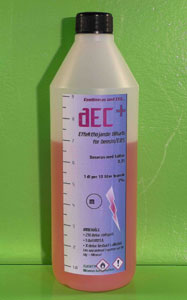 |
dEC+ |
Shall be combined with X66... |
 |
For both gasoline and E85. Carriers of octane-enhancing components. |
|||
Dose factor: 0.01 |
1 % |
||
Mix 0 |
|||
20 parts methylated spirits (avoid ethanol mixed with IPA) 1 part HMTA (hexamine) X parts soluble components sum = ? parts |
|||
Commentary |
|||
This naphtha-free experiment additive is a carrier consisting of denatured ethanol, which can be useful when one wants to introduce octane-enhancing components
in the fuel (ethanol is octane-enhancing in itself), without that glycol must be included. Methanol is an even better solvent for salts, which one can replace
some of the spirit with. However, avoid combining this fuel additive with IPA (isopropanol). As an ”experiment additive” can dEC+ be varied in many ways.
See examples. |
|||
Consumption gain: Not measured |
|||
Here are four long-acting additives for gasoline and diesel but ISO can also be used for E85. In gasoline is both acetone and IPA additives stable unlike for E85. There is no clear correlation between acetone volatility versus an additive stability (long-term effect).
 |
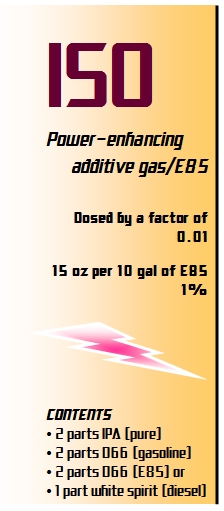 |
||
For both gasoline and E85 and also for DIESEL. |
|||
Dose factor: 0.01 |
1 % |
||
2 parts IPA (pure) 2 parts D66 for both gasoline or E85 1 part white spirit (only for diesel fuels) sum = 4 parts (3 parts for diesel) |
|||
Commentary |
|||
Along with a cleaning and lubricating component increases not only the power but also the fuel consumption should decrease. ISO can be seen as a Tripak
substitute. Select either D66 or white spirit (not both). |
|||
Consumption gain: Not measured |
|||
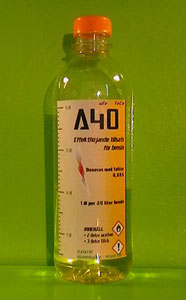 |
 |
||
For petrol (gasoline). |
|||
Dose factor: 0.005 |
0.5 % |
||
2 parts acetone 3 parts D66 sum = 5 parts |
|||
Commentary |
|||
This additive is especially suitable for petrol cars! Acetone plus a cleaning and lubricating component leads to increased power and lower fuel consumption.
The amount of acetone is now 0.2%. To reduce the level of acetone; try with 3/5 (0.19%) or 4/7 (0.18%) instead of 2/3 (0.2). A40 does not contain glycol.
This additive can hold ωFe (iron oleate) and also this: A20. |
|||
Consumption gain: 2-5 % |
|||
The content of ωFe: 300 ppm |
Opening time reduction: -10 % |
||
Two additives that take into account that practically all gas today contains 5-10% ethanol. AXg is the first fuel additive that combining both acetone and IPA. D66 can be incorporated which simplifies the dosing process. The fuel consumption always increases with ethanol but with AXg is my hope that this gasoline will reach its old position again. Even low octane gasoline can enjoy the benefits of AXg.
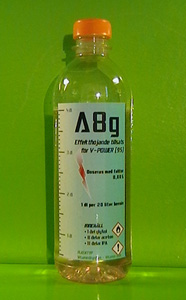 |
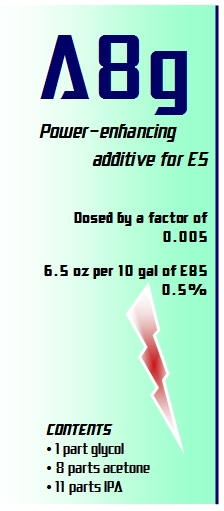 |
||
For petrol's with 5 % ethanol. |
|||
Dose factor: 0.005 |
0.5 % |
||
1 part glycol 8 parts acetone 11 parts IPA sum = 20 parts |
|||
Commentary |
|||
Avoid G+ because the amount of acetone is too high. A8g is the first additive that combines both acetone and IPA! When there already existing lubrication and
cleaning components in some fuels one can dismiss D66/Di66. It is possible to replace 6 parts of IPA with D66. For making the glycol component working,
add water - use for example pre-mixed glycol (antifreeze). |
|||
Consumption gain: 2-5 % |
|||
Opening time reduction: -10 % |
|||
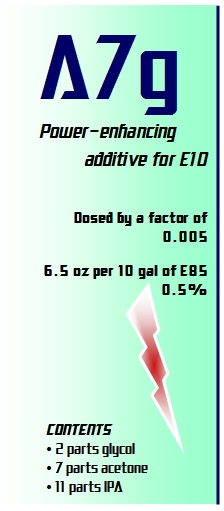 |
|||
For petrol's with 10 % ethanol. |
|||
Dose factor: 0.005 |
0.5 % |
||
2 parts glycol 7 parts acetone 11 parts IPA sum = 20 parts |
|||
Commentary |
|||
Avoid G+ because the amount of acetone is too high. A7g is also an alternative if one need to higher the glycol amount in the 5% petrol and at the same time
lower the amount of acetone a bit. For petrol products without lubrication and cleaning components is it possible to replace up to 4 parts IPA with D66. For
making the glycol component working, add water - use for example pre-mixed glycol (antifreeze). |
|||
Consumption gain: 2-5 % |
|||
Opening time reduction: -10 % |
|||
|
| |
|
| |











